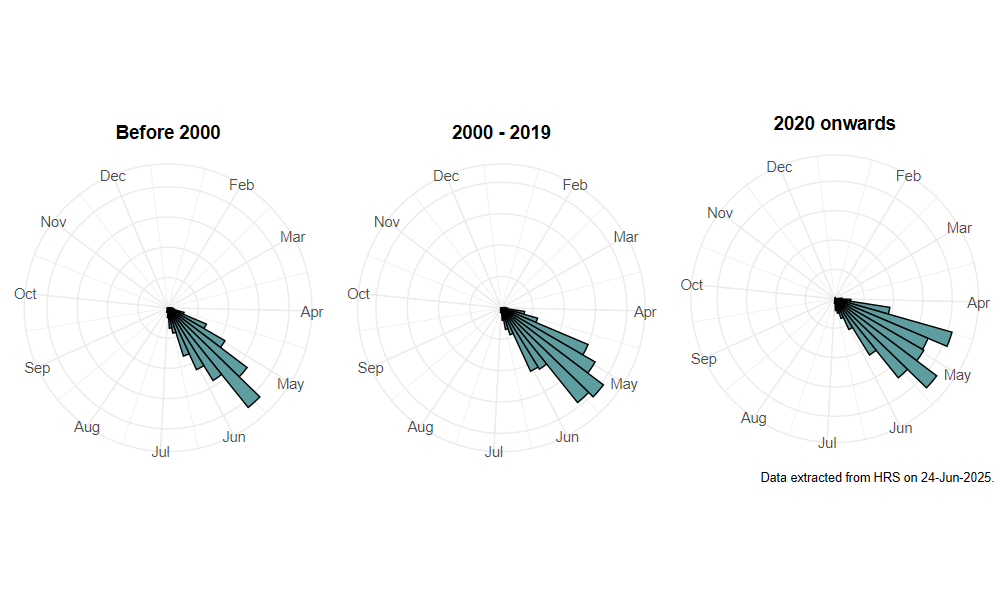Criorhina floccosa (Meigen, 1822)
Identification
Identification difficulty = 2. ![]()
![]() according to Ball & Morris, 20241
according to Ball & Morris, 20241
Biology
The larva has been found in wet, decaying wood debris in cavities in Elm Ulmus and Sycamore Acer pseudoplatanus and also in wet decaying roots of a Beech Fagus sylvatica stump. An association with Ash Fraxinus excelsior must also be expected because adults are often found around decaying stumps and pollards. Adults are flower visitors in woodland rides and glades, but also in hedgerows and other places where old trees and stumps are present. They are also regular leaf-baskers and can often be seen basking on sun-lit Sycamore leaves.
Flight period
The following plots show the number of unique records per week excluding those reported to be of immature stages.

Distribution
Widely distributed north to Cumbria, with highest concentrations of records from well-wooded areas. Records extend north to Sutherland although the majority of Scottish records north of the Central Lowlands are old.

Trends
The following plots show the Frescalo TFactor vs year and a map of the rescaled frequency (all records) for the species.
-
Ball, S., & Morris, R. (2024). Hoverflies of Britain and Ireland. WILDGuides (3rd ed.). Oxford: Princeton University Press. ↩